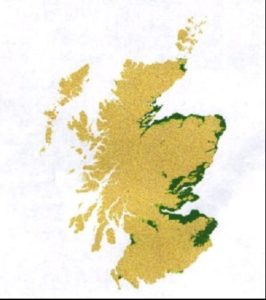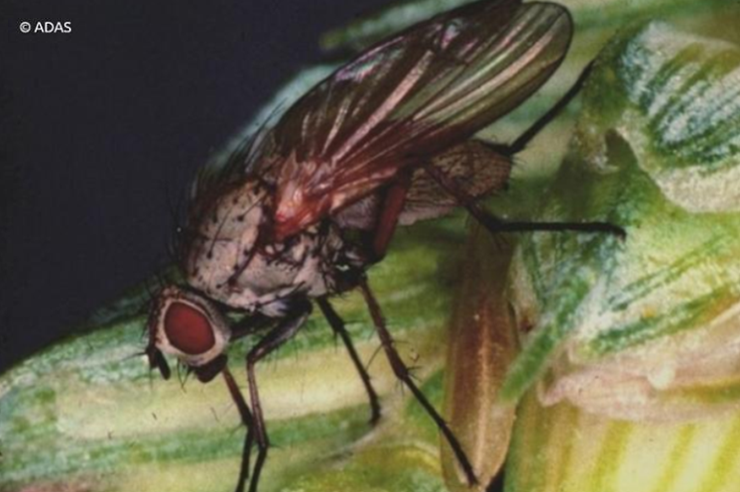Winter Wheat Update – August 2020
13 August 2020Data from monitored crops are shown in the table below. This data is generated in commercial crops in your area so is indicative of the disease pressure and growth stages on farms at the moment.
| Winter Wheat | Average | Maximum | Minimum |
|---|---|---|---|
| Crop Growth Stage | 83.2 | 91 | 71 |
| Abiotic Spotting | 2 | 2 | 0 |
| Mildew | 2.25 | 5 | 0 |
| Septora tritici | 1.15 | 4 | 0 |
| Take-all | 1 | 1 | 0 |
Diseases
Check out any patches in crops where the crop went off even earlier than the rest of the field – it is important to your future cropping that such patches are investigated and the causes identified. Eyespot and take-all risks in fields can be reduced through later drilling, so these might be fields you put behind others in your drilling plans. Take-all can be reduced by the use of the seed treatment silthiofam in seed for use in at risk fields.
Eyespot can be targeted through the use of more resistant varieties that carry the Pch1 gene that confers an enhanced partial resistance. Targeted use of eyespot effective sprays at stem extension in at-risk crops (i.e. those following infected crops even where there has been a one year gap) are the next port of call.
Remember to fill out a risk assessment for mycotoxins for any wheat entering the food chain, for more information click here
Healthy seed and seed treatments
Preventing problems at source is a key part of integrated pest management and one of the very easy wins. Buying certified seed of known health status or testing seed if home saving and judging the key diseases and risks for your crop are important first steps in getting the crop off on the best possible foot by avoiding problems at source and being able to select the most appropriate seed treatment. Single purpose seed treatments will take care of the traditional seed borne diseases like bunt. Most of the fungicide treatments available are based on azoles or fludioxonil but there are products which contain an SDHI, so an alternative mode of action. Dose levels are low enough that it doesn’t move in to foliage, and counts as one of your two SDHI applications to the crop. There is some evidence that SDHIs can help early vigour. The link with early vigour and yield is tenuous but it is certainly better that seedlings have vigour than lack it.
One in, several out and we have lost the range of seed treatments that used to provide early season control of foliar diseases. Early drilled crops are more at risk of BYDV infection and we no longer have the use of the neonicotinoid range of seed treatments. See the section on BYDV under ‘All Cereals’ in this report for stubble management and other options to reduce risk.
Silthiofam brings benefits in terms of take-all management but will need to be co-applied with another seed treatment to cover seed-borne diseases. If you are in a second or third wheat crop, it is at greatest risk from take-all, and it is in these situations where this type of seed treatment will provide the most benefit. If you are in a first wheat situation, there is no requirement for a specific take-all seed treatment, since a single year’s break continues to be the best way to minimize the impact from this disease.
Pests
Wheat bulb flies will be laying eggs through to late September. Growers are strongly advised to identify potential fields at risk now and consider an assessment of egg numbers from early-September in fields planned for wheat, particularly in light of the unavailability of chlorpyrifos as an egg hatch treatment.
Fields, particularly at risk, are those currently in potatoes, field vegetables and fallow that will be sown with wheat (or spring barley next year). Identify fields potentially at risk now and be prepared to get them sampled in early September, soil samples need to be taken before the field has been cultivated. Soil samples should be taken from early September onwards and advice provided on whether the crop will benefit from treatment to mitigate the impact of wheat bulb fly grubs when they hatch in February 2021.
The map below indicates areas where there are potential risks from wheat bulb fly based on past occurrence and a climate model that identifies areas with similar climates to those where wheat bulb fly has been a problem.
The following options are available to growers:
- Use decoy areas – fields with areas of bare soil that are not planned for cereals – these can divert flies away from fields planned for wheat/spring barley.
- Do nothing if egg counts are below damaging levels (relies on having an egg count assessment)
- Sow earlier rather then later if egg counts are at borderline threshold levels (relies on an egg count assessment)
- Sow seed treated with cypermethrin
If egg counts are known, then there are several informed choices that can be made.
Sign up to the FAS newsletter
Receive updates on news, events and publications from Scotland’s Farm Advisory Service


